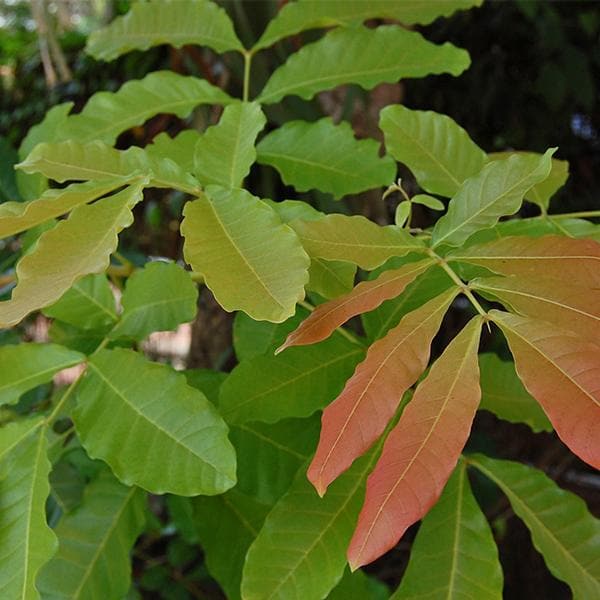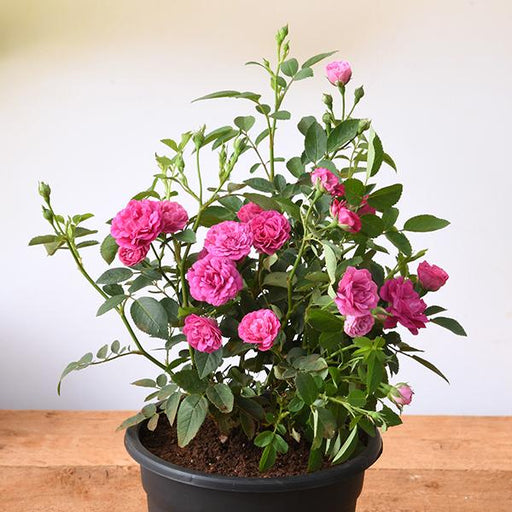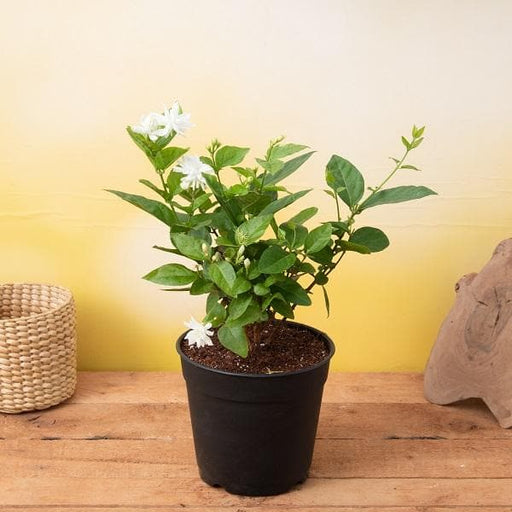
Kusum Tree, Ceylon Oak - Plant
(MRP Inclusive of all taxes)
- Shipping ₹79 for entire order
- Dispatch in 7 days
- Country of origin: India

(MRP Inclusive of all taxes)
 Save 29%
Save 29%
Air Purifier Money Plant with Pot The Air Purifier Money Plant, also known as Pothos or Epipremnum aureum, is a stunning indoor plant that...
View full details
 Save up to 15%
Save up to 15%
Peace Lily, Spathiphyllum - Plant The Peace Lily, scientifically known as Spathiphyllum, is a stunning houseplant celebrated for its elegant white...
View full details
 Save 25%
Save 25%
Jasminum sambac, Mogra, Arabian Jasmine - Plant Jasminum sambac, commonly known as Mogra or Arabian Jasmine, is a fragrant flowering plant...
View full details
 Save 18%
Save 18%
Combo Constituents Includes the Parijat Tree (Night-Flowering Jasmine), a culturally significant plant with fragrant flowers. Description The Pari...
View full details
 Save 25%
Save 25%
Miniature Rose, Button Rose (Any Color) - Plant The Miniature Rose, also known as the Button Rose, is a charming and compact flowering plant that ...
View full details Save 25%
Save 25%
Damascus Rose, Scented Rose (Any Color) - Plant The Damascus Rose, also known as Rosa damascena, is a timeless symbol of beauty and romanc...
View full details
 Save 17%
Save 17%
Beautiful Fragrant Mogra, Arabian Jasmine Plant with Pot The Beautiful Fragrant Mogra, also known as Arabian Jasmine (Jasminum sambac), is...
View full details Save 15%
Save 15%
Pack of Vermicompost and Neem Cake for House Plants Transform your indoor garden with our premium Pack of Vermicompost and Neem Cake, spec...
View full details
Pack of Plant Growth and Flower Boosters Unlock the full potential of your garden with our Pack of Plant Growth and Flower Boosters! This ...
View full details Save 38%
Save 38%
Combo of Jeevamrut and Neem Raksha for Easy Growth and Protection of Houseplants Transform your indoor garden with our exclusive combo of ...
View full details Save 22%
Save 22%
Plant Nutrients Kit (Pack of 16) for a Healthy Garden Transform your garden into a lush paradise with our Plant Nutrients Kit, featuring 1...
View full details Save 16%
Save 16%
Combo of Top Plant Fertilizers Elevate your gardening game with our exclusive Combo of Top Plant Fertilizers, featuring two bags of premiu...
View full details Save 24%
Save 24%
Pack of 4 Additives to Make Soil Healthy and Nutrient Rich Transform your garden into a thriving ecosystem with our Pack of 4 Additives de...
View full details Save 30%
Save 30%
Transform your gardening experience with our premium Combo of Perlite and Vermiculite. This unique blend is designed to enhance soil aeration and ...
View full details Save 27%
Save 27%
Combo of 2 Vermicompost and Cocopeat - Enrich Your Soil Naturally! Transform your garden into a thriving ecosystem with our Combo of 2 Ver...
View full details
 Save 35%
Save 35%
Best 6 Plants for Perfect Indoor Garden Transform your living space into a lush oasis with our curated collection of the Best 6 Plants for a...
View full details
 Save up to 50%
Save up to 50%
Mini Succulent Garden Pack Transform your space with our Mini Succulent Garden Pack, featuring a delightful collection of 4 any variety beautiful s...
View full details
 Save 30%
Save 30%
5 Best Fragrant Plants Transform your garden or indoor space into a fragrant paradise with our curated selection of the 5 Best Fragrant Plants. Th...
View full details
 Save 24%
Save 24%
Set of 2 Bonsai Looking Grafted Adeniums Transform your indoor or outdoor space with our exquisite Set of 2 Bonsai Looking Grafted Adenium...
View full details Save 45%
Save 45%
Top 4 Die Hard Succulents Pack Transform your indoor or outdoor space with our Top 4 Die Hard Succulents Pack, featuring a curated selecti...
View full details
 Save 30%
Save 30%
5 Best Indoor Plants Pack Transform your living space into a lush oasis with our '5 Best Indoor Plants Pack.' This carefully curated collection fe...
View full details
 Save 25%
Save 25%
Set of 4 Evergreen Air Purifier Plant Pack Transform your indoor space into a lush, green oasis with our Set of 4 Evergreen Air Purifier Pla...
View full details| SrNo | Item Name |
|---|---|
| 1 | Kusum Tree, Ceylon Oak - Plant |
The Kusum Tree, scientifically known as *Schleichera oleosa*, is a majestic tree native to the tropical regions of South Asia, particularly found in Sri Lanka and India. Known for its beautiful foliage and valuable timber, this tree can grow up to 30 meters tall, making it a stunning addition to any landscape. Its leaves are glossy and dark green, providing a lush canopy that offers shade and habitat for various wildlife.
What makes the Kusum Tree special is its dual purpose: it not only serves as an ornamental tree but also produces seeds that are rich in oil, which is used in traditional medicine and cooking. The tree's bark and leaves have been utilized in Ayurvedic practices for centuries, showcasing its cultural significance. Additionally, the Kusum Tree plays a vital role in preventing soil erosion, making it an environmentally friendly choice for reforestation projects.
One of the standout features of the Kusum Tree is its resilience to drought and adaptability to various soil types, making it an excellent choice for sustainable landscaping. Its beautiful yellow flowers attract pollinators, contributing to local biodiversity.
The Kusum Tree plays a crucial role in maintaining ecological balance. Its extensive root system helps prevent soil erosion, while its canopy provides habitat for various bird species. By planting Kusum Trees, you contribute to reforestation efforts and promote biodiversity in your local environment.
The Kusum tree, also known as the Ceylon Oak, is not just a pretty face in the botanical world. This tree is a multitasker, providing shade, timber, and even medicinal properties. Its leaves are like nature's own air purifiers, while its bark can be brewed into a tea that might just make you feel like a wellness guru. Plus, who wouldn’t want to brag about having a tree that’s a jack-of-all-trades in their backyard?
Caring for the Ceylon Oak is like nurturing a diva; it requires attention but rewards you handsomely. This tree thrives in well-drained soil and loves a good sunbath. Water it regularly, but don’t drown it—think of it as a spa day, not a water park. With the right care, your Ceylon Oak will grow tall and proud, making your neighbors green with envy.
If you’re looking for a fast-growing companion, the Kusum tree is your go-to. This tree doesn’t just grow; it practically sprints to maturity, reaching impressive heights in just a few years. It’s like the Usain Bolt of the plant kingdom. So, if you want a quick shade provider or a timber source, this tree will have you covered before you can say “photosynthesis.”
The Ceylon Oak is not just a pretty sight; it’s a utility player in the ecosystem. From providing timber for furniture to being a source of fodder for livestock, this tree does it all. Its leaves can be used for mulch, and its flowers are a feast for bees. Talk about a tree that knows how to network!
Planting a Kusum tree is like setting up a new friend for success. Choose a sunny spot with well-drained soil, and give it plenty of room to spread its roots. Dig a hole that’s twice as wide as the root ball, and don’t forget to give it a good drink of water after planting. With these tips, your Kusum tree will be thriving in no time, ready to take on the world—or at least your backyard.
The Ceylon Oak is like the superhero of the plant world, fighting climate change one leaf at a time. It absorbs carbon dioxide and releases oxygen, making it a champion for cleaner air. Plus, its extensive root system helps prevent soil erosion. So, planting a Ceylon Oak is not just a gift to yourself; it’s a gift to Mother Earth.
Propagating the Kusum tree is easier than convincing your friend to binge-watch a new series. You can grow it from seeds or cuttings, and with a little patience, you’ll have new trees sprouting up like popcorn. Just remember to keep the soil moist and provide some warmth, and soon you’ll be the proud parent of a mini forest.
Every tree has its enemies, and the Ceylon Oak is no exception. But fear not! This tree is relatively pest-resistant, making it a low-maintenance option for gardeners. Occasional visits from aphids or caterpillars might happen, but with a little vigilance and some natural remedies, you can keep your Ceylon Oak looking fabulous and pest-free.
The Kusum tree is the ultimate landscape diva, adding elegance and charm to any garden. Its lush foliage and striking flowers make it a focal point that can elevate your outdoor space from drab to fab. Whether you’re creating a serene retreat or a vibrant gathering spot, the Kusum tree will be the star of the show, drawing compliments from all who pass by.
When it comes to timber, the Ceylon Oak is like the fine wine of the wood world. Known for its durability and beautiful grain, it’s perfect for crafting furniture that will last for generations. Plus, it’s resistant to decay, so you won’t have to worry about your heirloom pieces falling apart. Investing in Ceylon Oak timber is like investing in a legacy.
The Kusum tree isn’t just a pretty plant; it’s steeped in cultural significance. In many regions, it’s considered sacred and is often associated with various rituals and traditions. Planting a Kusum tree can symbolize growth, prosperity, and a connection to nature. So, when you plant one, you’re not just adding greenery; you’re also embracing a rich tapestry of cultural heritage.
The Kusum Tree, also known as Ceylon Oak, is a tropical beauty that boasts a stunning canopy and vibrant foliage. It’s like the diva of the forest, flaunting its glossy leaves and golden flowers. Perfect for shade and timber, this tree is nature’s multitasker, proving that looks and utility can indeed go hand in hand.
The Kusum Tree can reach impressive heights of up to 30 meters! That’s taller than your average two-story house, making it the skyscraper of the plant world. Just imagine it strutting its stuff in your garden, casting shade like a pro while you sip your iced tea. Talk about a tree with a view!
Kusum Trees thrive in tropical and subtropical climates, so think warm and sunny! They love well-drained soil and plenty of space to spread their roots. Plant it in your backyard or a park, and watch it become the neighborhood’s favorite hangout spot. Just make sure it has room to grow; it’s not a fan of cramped quarters!
This tree is no slowpoke! The Kusum Tree can grow up to 1 meter per year under ideal conditions. It’s like the overachiever of the plant kingdom, racing towards maturity while you sip your coffee. Just give it some love, water, and sunshine, and it’ll reward you with a lush canopy in no time.
Planting a Kusum Tree is like inviting a superhero into your garden! It provides shade, improves air quality, and supports local wildlife. Plus, its timber is highly valued for furniture and construction. So, not only do you get a stunning tree, but you also get a sustainable source of materials. Win-win!
Absolutely! The Kusum Tree is like that friend who doesn’t need constant attention. It’s drought-tolerant once established and requires minimal pruning. Just give it some water during dry spells, and it’ll thrive. So, if you’re looking for a low-maintenance plant that still turns heads, this tree is your go-to!
Yes, you can! Growing a Kusum Tree from seeds is like starting a new adventure. Just soak the seeds overnight, plant them in well-drained soil, and watch the magic happen. With a little patience and care, you’ll soon have a young tree ready to take on the world—or at least your backyard!
While the Kusum Tree is generally resilient, it can attract a few pesky visitors like aphids and caterpillars. Think of them as uninvited guests at a party. A little neem oil or insecticidal soap can send them packing. Keep an eye out, and your tree will remain the belle of the botanical ball!
Absolutely! The Kusum Tree is urban-friendly, providing shade and beauty in concrete jungles. Its robust nature allows it to thrive in less-than-ideal conditions, making it a perfect candidate for city parks and streets. Just imagine a row of these beauties lining your neighborhood—nature’s way of softening the urban edge!
The Kusum Tree is a long-lived companion, often reaching ages of 50 years or more. It’s like the wise elder of the garden, sharing stories through its rings. With proper care, it can outlast many of your favorite plants, becoming a cherished part of your landscape for generations to come.
Absolutely! Kusum Tree wood is prized for its durability and beautiful grain, making it a favorite for furniture makers. It’s like the fashionista of the wood world, always in style. So, if you’re looking for sustainable, high-quality timber, this tree has got your back—just don’t forget to thank it for its service!